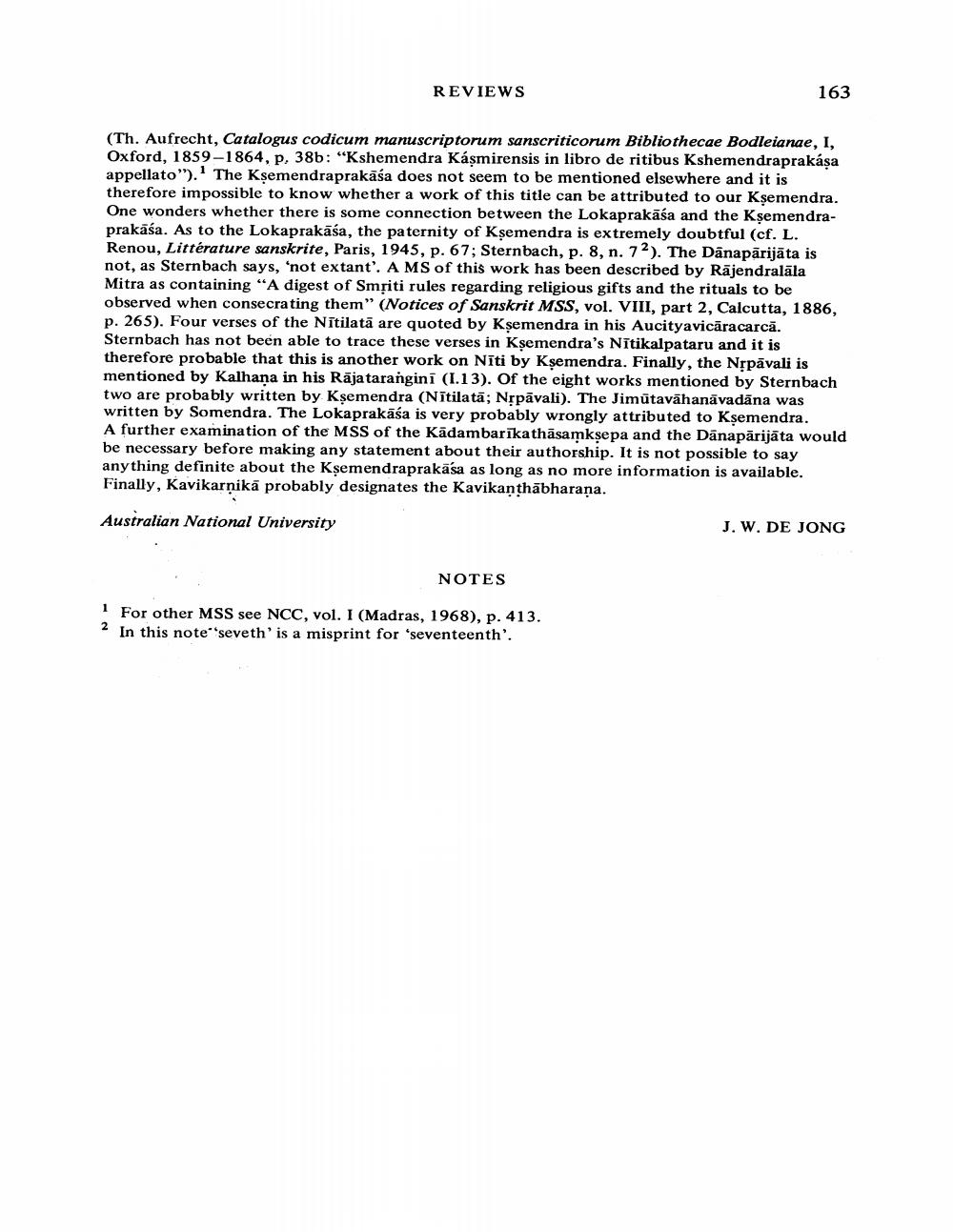________________ REVIEWS 163 (Th. Aufrecht, Catalogus codicum manuscriptorum sanscriticorum Bibliothecae Bodleianae, I, Oxford, 1859-1864, p. 38b: "Kshemendra Kasmirensis in libro de ritibus Kshemendraprakasa appellato"). The Ksemendraprakasa does not seem to be mentioned elsewhere and it is therefore impossible to know whether a work of this title can be attributed to our Ksemendra. One wonders whether there is some connection between the Lokaprakasa and the Ksemendraprakasa. As to the Lokaprakasa, the paternity of Ksemendra is extremely doubtful (cf. L. Renou, Litterature sanskrite, Paris, 1945, p. 67; Sternbach, p. 8, n. 72). The Danaparijata is not, as Sternbach says, 'not extant'. A MS of this work has been described by Rajendralala Mitra as containing "A digest of Smtiti rules regarding religious gifts and the rituals to be observed when consecrating them" (Notices of Sanskrit MSS, vol. VIII, part 2, Calcutta, 1886, p. 265). Four verses of the Nitilata are quoted by Ksemendra in his Aucityavicaracarca. Sternbach has not been able to trace these verses in Ksemendra's Nitikalpataru and it is therefore probable that this is another work on Niti by Ksemendra. Finally, the Nspavali is mentioned by Kalhana in his Raja tarangini (1.13). Of the eight works mentioned by Sternbach two are probably written by Ksemendra (Nitilata; Nepavali). The Jimutavahanavadana was written by Somendra. The Lokaprakasa is very probably wrongly attributed to Ksemendra. A further examination of the MSS of the Kadambarikathasamksepa and the Danaparijata would be necessary before making any statement about their authorship. It is not possible to say any thing definite about the Ksemendraprakasa as long as no more information is available. Finally, Kavikarnika probably designates the Kavikanthabharana. Australian National University J. W. DE JONG NOTES 1 For other MSS see NCC, vol. I (Madras, 1968), p. 413. 2 In this note''seveth' is a misprint for 'seventeenth'.




